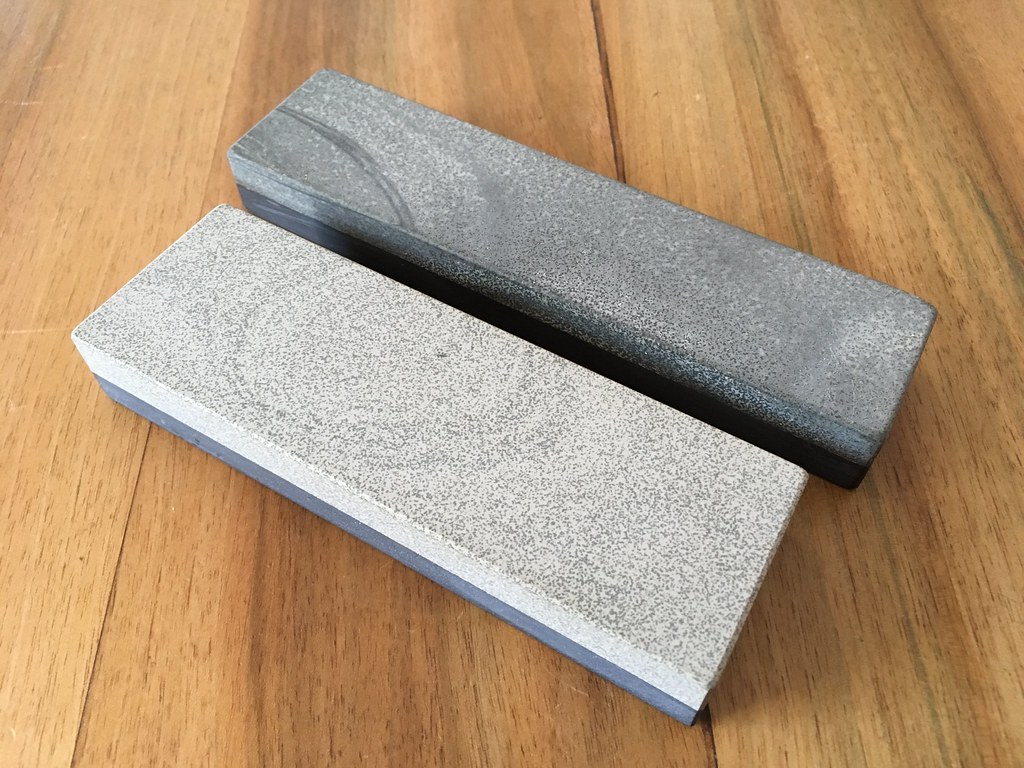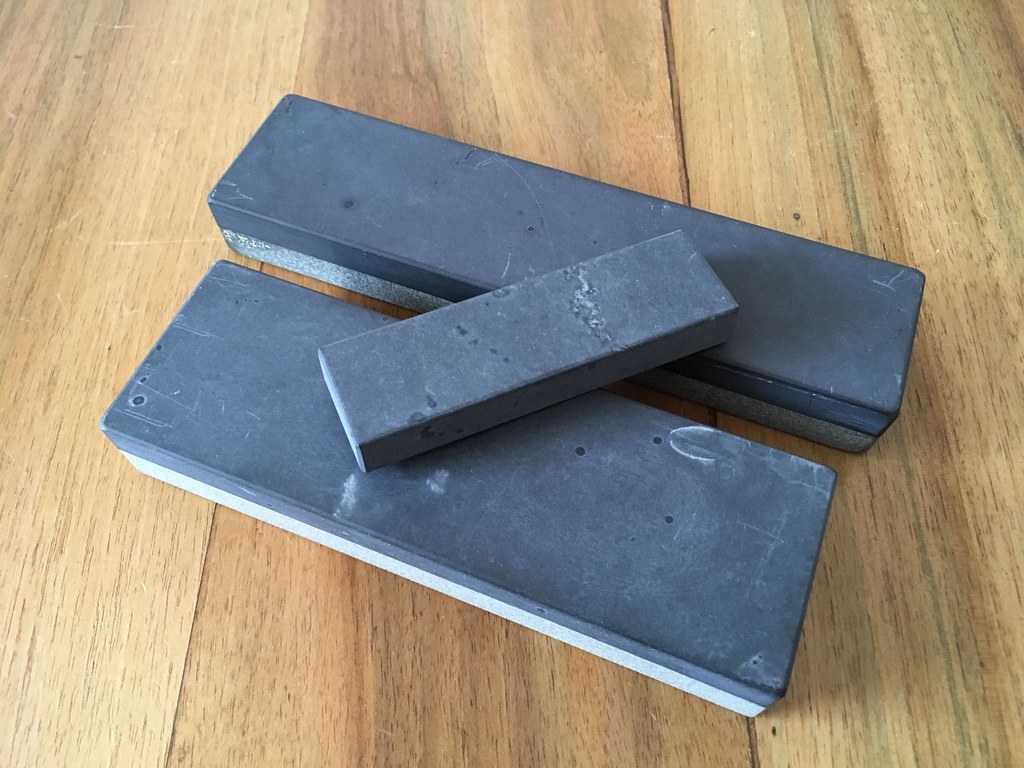
-
Mel; can you post photo's or provide the link of the WOA with the swirl patterns.
Stewie;
-
Mel; the following shows some Scottish dual hones. The lighter side is TOS, and the darker side is WOA. http://straightrazorplace.com/hones/...ne-quiz-2.html


Last edited by Stewie Simpson; 10-31-2016 at 1:25 AM.
-
Trying to identify a Natural Honing Stone based solely on its colour and grain pattern can be very difficult. The colour of its slurry, its workability, and its likely grit range may also play an important role. There is also the potential that the stone in question was not actually mined within the country it was purchased from.
The following is a sample of U.K mined honing stones.
Nos. 1 & 7. Dalmore Blue.
Nos. 2, 3, 4, 5, 6, 8, 9, 11, & 12. Tam o"Shanter.
Nos. 10 & 13. Water of Ayr. (No. 10 would now be classified as a Tam o"Shanter)

Last edited by Stewie Simpson; 10-31-2016 at 2:40 AM.
-
Water of Ayr and Tam O' Shanter sticks were
used by silver smiths as an abrasive stick. They were often about 1/4" square and 4" long,to smooth surfaces in corners and around things like handles and spouts,where solder would be seen after attaching them.
I have several,up to about 5/8" square. But,I gave most of them away to a working silversmith friend. You can't get them any more,as far as I know. But,I haven't been seeking them. I think they quit making them in the 1980's.
In fact,there is a little "museum" somewhere in Scotland showing how these stones were sawn up,etc. There are SCADS of sawn stones laying on the benches. I WISH I could get some of those!! Maybe someone else will start making the stones again. We can only hope. So many tools and materials used by all kinds of craftsmen have stopped being made.
For example: If you want a GOOD manual lathe,and don't want something made in China,you are practically forced to buy a 50+ year old American or European made lathe,and rebuild it,without parts being available,for the most part. And,getting the bed reground is a very expensive proposition.
Last edited by george wilson; 10-31-2016 at 10:48 AM.
-
Stewie, you are forcing me to admit I don't know how to post pics!! I just google "see photos of Water Of Ayr razor hones", some of the stones are shown with the original labeled boxes. WOA is a hard stone that is usually not slurried. The fineness can be close to thurrys and that will probably ultimately convince you. If you google "water of ayr " stone used to sharpen microtomes there is an article from around 1900 reccomending them for that purpose.
-
Mel; there is another possible lead to the identity of the darker stone;
Waraho Water Razor Hone
Dark, charcoal black coloured hone. Very similiar in feel to Thuringen stones. The box reads, "This Hone has been produced to meet the demand for an inexpensive yet effective Hone." Made in Great Britain, exact origin unknown. http://straightrazorplace.com/hones/...ea-origin.html
from the first look its seems not be like thuringian Material, slurry is darker nearly brown/blackish..
http://straightrazorplace.com/hones/...or-hone-2.html
Last edited by Stewie Simpson; 10-31-2016 at 8:26 PM.
 Posting Permissions
Posting Permissions
- You may not post new threads
- You may not post replies
- You may not post attachments
- You may not edit your posts
-
Forum Rules

